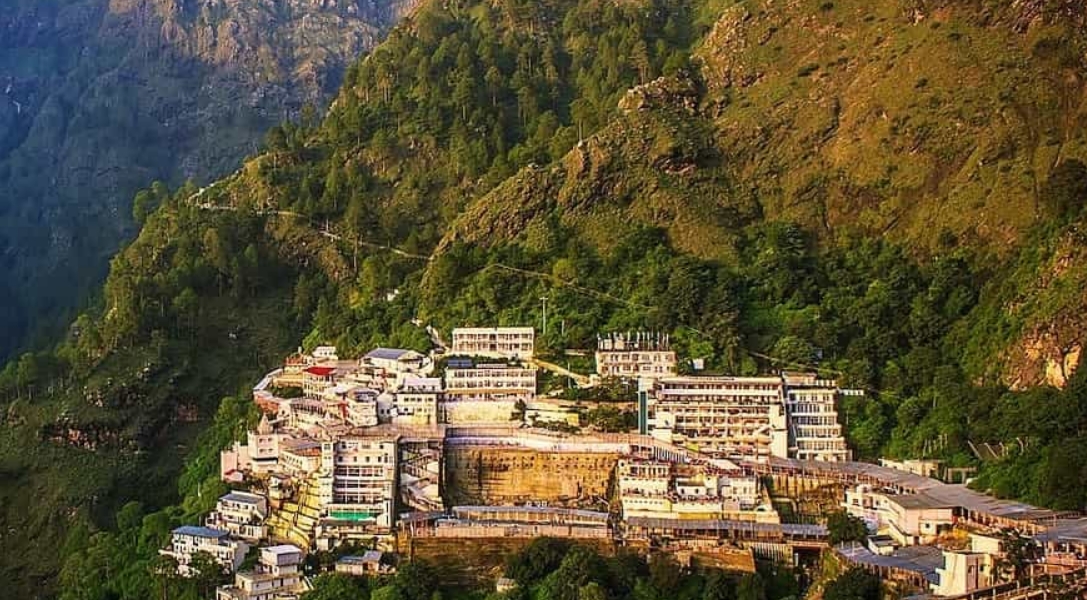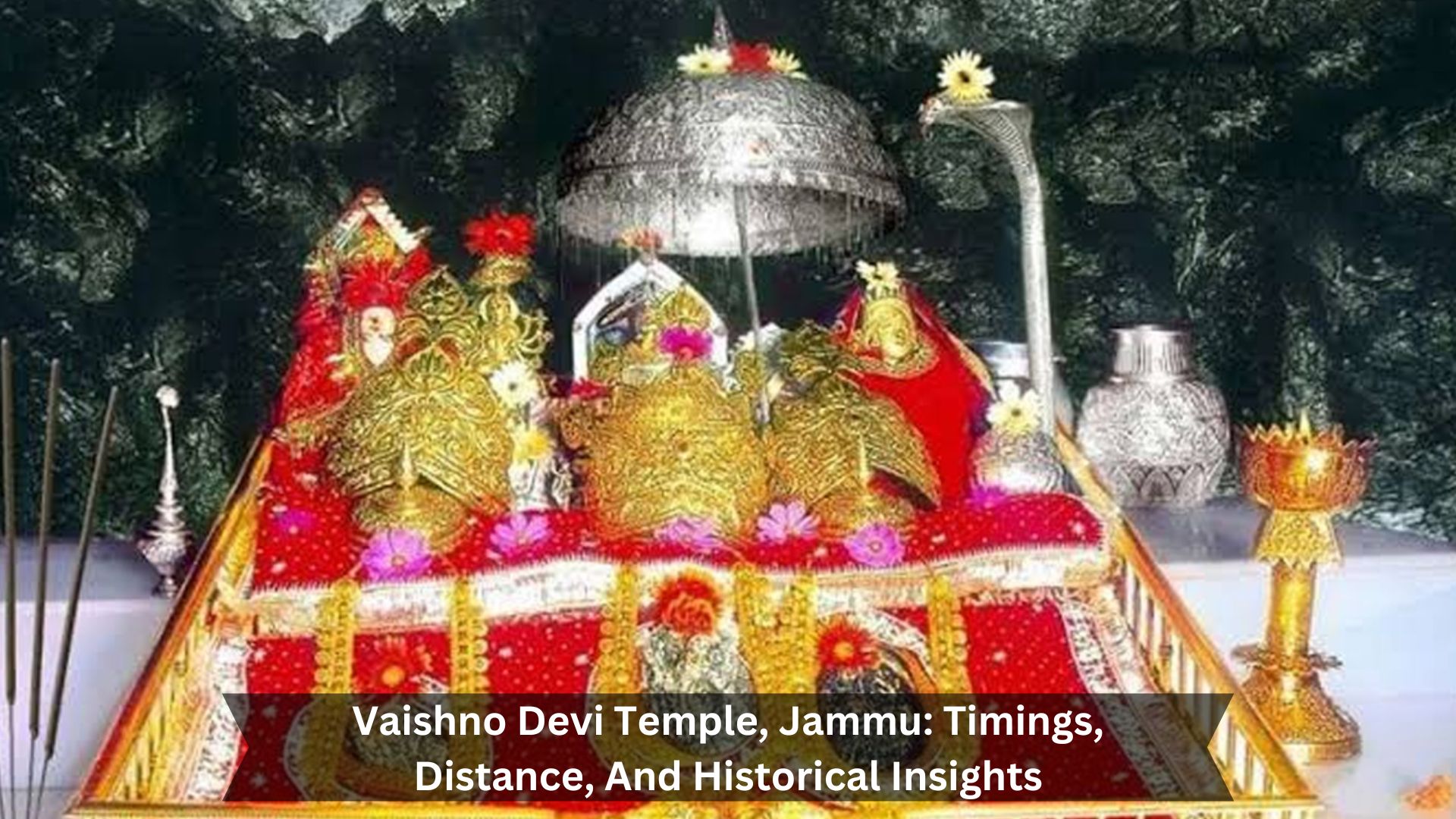Nestled in the Trikuta Hills of Jammu, the Vaishno Devi Temple is a beacon of faith, attracting millions of pilgrims annually. They come to seek blessings from Mata Vaishno Devi, a revered Mother Goddess.
This place isn’t just about spiritual devotion; it’s also a melting pot of different cultural traditions from across India. The temple sits high up at 1,585 meters, and getting there is no easy task. Pilgrims walk the whole way, a journey that’s as much about cleansing the soul as it is about reaching the destination. Once they reach the temple inside a sacred cave, they are greeted by unique natural rock formations. Here, they pause to pray and connect with the divine. It’s a powerful experience, marked by a deep sense of peace and fulfillment.
Vaishno Devi Temple History
Historical significance

Vaishno Devi Temple has a long history rooted in devotion. The story begins with a Hindu priest named Pandit Sridhar, who found a holy cave after the Goddess Vaishnavi appeared in his dream. This discovery turned the place into a key spiritual site.
See Also – Subramanya Swamy Temple, Mopidevi – Timings, Distance, History
Located on the Trikuta Hills, the temple has seen a massive increase in visitors. In 1981, about 900,000 pilgrims visited the temple, but by 2018, that number had jumped to 8.5 million. Each person comes for blessings and to honor their religious commitments, showing this temple’s deep historical and spiritual significance in the Hindu community.
Visiting Vaishno Devi Temple, Jammu
Timings and rituals
| Day of the Week | Morning Aarti | Evening Aarti |
|---|---|---|
| Monday | 6:20 AM – 8:00 AM | 6:20 PM – 8:00 PM |
| Tuesday | 6:20 AM – 8:00 AM | 6:20 PM – 8:00 PM |
| Wednesday | 6:20 AM – 8:00 AM | 6:20 PM – 8:00 PM |
| Thursday | 6:20 AM – 8:00 AM | 6:20 PM – 8:00 PM |
| Friday | 6:20 AM – 8:00 AM | 6:20 PM – 8:00 PM |
| Saturday | 6:20 AM – 8:00 AM | 6:20 PM – 8:00 PM |
| Sunday | 6:20 AM – 8:00 AM | 6:20 PM – 8:00 PM |
Visiting the Vaishno Devi Temple involves following specific timings and participating in traditional rituals. The temple opens at 5 AM with the morning Aarti, starting the day on a spiritual note. Devotees can enter and pray until noon. Then, the temple closes for a short period for Bhog.

It reopens at 4 PM and stays open until the evening Aarti at 8 PM, which ends the day’s worship. You can also book special rituals like the Attka Aarti for a more personal spiritual experience. During the Navaratri festival, the temple stays open longer to handle the increase in visitors seeking blessings from the Goddess.
Also Read – Dakor Temple – Darshan Timings History & More
How to Reach The Vaishno Devi Temple
To reach the Vaishno Devi Temple, you start with a 13-kilometer hike from Katra, the central gathering point for visitors. If walking isn’t an option, you can hire ponies or palanquins.
| Mode of Transport | Details |
|---|---|
| By Air | – Nearest Airport: Jammu Airport (Satwari Airport), 50 km from Katra. |
| By Train | – Nearest Railway Station: Katra Railway Station, 2 km from the town center. – Jammu Tawi Railway Station, 50 km from Katra. |
| By Road | – Distance: 50 km from Jammu to Katra. – Well-maintained roads and buses available from major North Indian cities. |
| Trekking to the Temple | – Trek Length: 13.5 km from Katra to Bhawan. – Trek takes 5-7 hours with refreshment stalls available along the way. |
| Best Time to Visit | – March to October: Best weather conditions. |
A helicopter service from Katra to Sanjichhat speeds up the trip and lets you see the beautiful surroundings from above. Recently, they’ve added a ropeway from the temple to Bhairon Ghati, which only takes a few minutes. Battery-operated vehicles are also available if you prefer a smoother ride. These various transportation methods ensure that everyone can visit, no matter their physical condition.
Conclusion
The Vaishno Devi Temple, set in the Trikuta Hills, draws millions of visitors every year. People come here for a profound spiritual experience. This place isn’t just about faith; it’s also wrapped in fascinating stories and history. The tale of Vaishno Devi and the stories of how the temple was found and grew are inspiring. The temple is well-managed, handling large crowds smoothly, especially during big festivals like Navratri. Here, you’re promised a peaceful and secure visit. Whether you’re looking to satisfy your soul, learn a bit of history, or just explore a new culture, the Vaishno Devi Temple is a critical stop in India’s religious and cultural scene.

Deepak Sharma is a passionate writer and avid traveler who specializes in uncovering the beauty and history of India’s attractions and temples. A graduate of Delhi University, Deepak has a deep-rooted love for his country and its rich cultural heritage.
